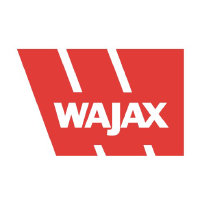
Deutsche Bank AG
XETRA:DBK


| US |

|
Johnson & Johnson
NYSE:JNJ
|
Pharmaceuticals
|
| US |

|
Berkshire Hathaway Inc
NYSE:BRK.A
|
Financial Services
|
| US |

|
Bank of America Corp
NYSE:BAC
|
Banking
|
| US |

|
Mastercard Inc
NYSE:MA
|
Technology
|
| US |

|
Abbvie Inc
NYSE:ABBV
|
Biotechnology
|
| US |

|
Pfizer Inc
NYSE:PFE
|
Pharmaceuticals
|
| US |

|
Palantir Technologies Inc
NYSE:PLTR
|
Technology
|
| US |

|
Nike Inc
NYSE:NKE
|
Textiles, Apparel & Luxury Goods
|
| US |

|
Visa Inc
NYSE:V
|
Technology
|
| CN |

|
Alibaba Group Holding Ltd
NYSE:BABA
|
Retail
|
| US |

|
3M Co
NYSE:MMM
|
Industrial Conglomerates
|
| US |

|
JPMorgan Chase & Co
NYSE:JPM
|
Banking
|
| US |

|
Coca-Cola Co
NYSE:KO
|
Beverages
|
| US |

|
Realty Income Corp
NYSE:O
|
Real Estate
|
| US |

|
Walt Disney Co
NYSE:DIS
|
Media
|
| US |

|
PayPal Holdings Inc
NASDAQ:PYPL
|
Technology
|
Utilize notes to systematically review your investment decisions. By reflecting on past outcomes, you can discern effective strategies and identify those that underperformed. This continuous feedback loop enables you to adapt and refine your approach, optimizing for future success.
Each note serves as a learning point, offering insights into your decision-making processes. Over time, you'll accumulate a personalized database of knowledge, enhancing your ability to make informed decisions quickly and effectively.
With a comprehensive record of your investment history at your fingertips, you can compare current opportunities against past experiences. This not only bolsters your confidence but also ensures that each decision is grounded in a well-documented rationale.
Do you really want to delete this note?
This action cannot be undone.

| 52 Week Range |
9.501
16.66
|
| Price Target |
|
We'll email you a reminder when the closing price reaches EUR.
Choose the stock you wish to monitor with a price alert.

|
Johnson & Johnson
NYSE:JNJ
|
US |

|
Berkshire Hathaway Inc
NYSE:BRK.A
|
US |

|
Bank of America Corp
NYSE:BAC
|
US |

|
Mastercard Inc
NYSE:MA
|
US |

|
Abbvie Inc
NYSE:ABBV
|
US |

|
Pfizer Inc
NYSE:PFE
|
US |

|
Palantir Technologies Inc
NYSE:PLTR
|
US |

|
Nike Inc
NYSE:NKE
|
US |

|
Visa Inc
NYSE:V
|
US |

|
Alibaba Group Holding Ltd
NYSE:BABA
|
CN |

|
3M Co
NYSE:MMM
|
US |

|
JPMorgan Chase & Co
NYSE:JPM
|
US |

|
Coca-Cola Co
NYSE:KO
|
US |

|
Realty Income Corp
NYSE:O
|
US |

|
Walt Disney Co
NYSE:DIS
|
US |

|
PayPal Holdings Inc
NASDAQ:PYPL
|
US |
This alert will be permanently deleted.
 Deutsche Bank AG
Deutsche Bank AG
















 You don't have any saved screeners yet
You don't have any saved screeners yet

Ladies and gentlemen, welcome and thank you joining Q4 2021 fixed income call of Deutsche Bank. [Operator Instructions] Now I'd like to turn the conference over to Philip Teuchner. Please go ahead.
Thank you, Gerard. Good afternoon or good morning, and thank you all for joining us today. On the call, our Group Treasurer, Dixit Joshi, will take us through some fixed income-specific topics. From the subsequent Q&A session, we also have our CFO, James von Moltke, with us to answer your questions. The slides that accompany the topics are available for download from our website at db.com. After the presentation, we'll be happy to take your questions. But before we get started, I just want to remind you that the presentation may contain forward-looking statements, which may not develop as we currently expect. Therefore, please take note of the precautionary warning at the end of our materials. With that, let me hand over to Dixit.
Thank you, Philip, and welcome from me. We are now almost 3/4 of the way through the strategy we launched in 2019. The progress we have made shows 2021 was a pivotal year in this transformation journey. Firstly, we have demonstrated the strength of our franchise. This is reflected in the market share gains we made in key businesses over the past 2 years, and we remain encouraged to see client engagement continuing to grow. Secondly, we continue to work intensively on transforming the bank. Having booked transformation charges of EUR 1 billion and approximately EUR 500 million of restructuring and severance in 2021, we have now recognized 97% of our total anticipated transformation-related effects. Our transformational efforts and investments over the past years are paying off and will help drive reductions in our expenses in future quarters and years. And we continue to be absolutely focused on capturing these benefits through further cost-saving measures, so we remain confident we are on the right path to meet our 70% cost-income ratio target. We also delivered on another important milestone within our Capital Release Unit by completing the transition of Prime Finance to BNP Paribas. This means our deleveraging exceeded our plans and our leverage exposure in the CRU is now down to EUR 39 billion from EUR 70 billion at the end of 2020 and down 84% since we launched our strategy in mid-2019. And finally, the transformation delivered significantly improved profitability in 2021. Our pretax profit of EUR 3.4 billion more than tripled compared to 2020 despite higher transformation charges. We reported a net profit of EUR 2.5 billion, a more than fourfold increase compared to 2020 and Deutsche Bank's highest full year profit since 2011 despite absorbing additional transformational expenses. Now let me take you through the financial highlights of what we have achieved in 2021 and since 2019 on Slide 2. We have grown revenues and reduced expenses each year since 2019, while at the same time, executing on our transformation. We again delivered positive operating leverage at group level in 2021. 2021 provision for credit losses declined 71% year-on-year to 12 basis points of average loans. This reflects the benign credit environment but also the strength of our conservative loan book and sound risk management. Return on tangible equity for the core bank is 6% for the full year and 8.5% on an adjusted basis. This sets us on a clear path to our group target of 8% return on tangible equity in 2022. Our focus on transformation has driven a steady improvement in underlying profitability, which can be seen on Slide 3. In the Core Bank, we have more than doubled our adjusted profit before tax since 2019, including an increase of 46% in the last 12 months. Our improved profitability was a major driver for the 3 rating upgrades we received in 2021, the latest by S&P in November. This is not only a recognition of our transformation success, but it also further supports our client's engagement and revenue momentum. The Capital Release Unit delivered another year of significant portfolio reduction. A key driver of higher profitability is our sustainable revenue performance, which I will now turn to on Slide 4. Revenues excluding specific items in the Core Bank stood at EUR 25.3 billion in 2021, up 5% compared to 2020 and 11% since 2019. Revenues in the Corporate Bank were flat year-on-year as underlying business growth and continued deposit repricing offset interest rate headwinds, and we are particularly encouraged to see revenue growth accelerate this quarter. In the Investment Bank, revenues increased 4% year-on-year compared to a strong 2020 on higher contribution from Origination & Advisory, while fixed income and currencies revenues were essentially flat. In the Private Bank, strong business volume more than offset interest rate headwinds and the impact of foregone revenues from the BGH ruling in April. As a result, revenues were stable year-on-year. Asset Management delivered significant revenue growth of 21% year-on-year, driven by strong management and performance fees. Assets under management closed at a record EUR 928 billion. Group revenues, excluding specific items, were EUR 25.3 billion, a 9% increase from 2019. While we benefited from favorable market conditions in certain business areas, 2021 revenues also demonstrate our ability to offset headwinds in light of our business mix. And thus, 2021 revenues provide a solid base to grow from here, and this is confirmed by the momentum carried through to the first weeks of 2022. Let me now turn to costs on Slide 5. We have reduced our cost-to-income ratio by 24 percentage points since 2019, with noninterest expenses declining by 14% to EUR 21.5 billion over 2 years. Year-on-year, 2021 expenses were up 1%. The increase reflects higher transformation-related effects of EUR 1.5 billion, up 21% year-on-year, predominantly driven by transformation charges of EUR 1 billion, more than double the amount we put in 2020. At the same time, our adjusted costs declined by 1% despite higher volume and performance-related expenses, reflecting improved business performance. 2021 was an investment year, and we have made and continue to make significant improvements in technology. These efforts already delivered savings in 2021. However, we made a strategic decision to reinvest them this year to support lower costs in the future. We have also worked to deliver on our commitment to invest in our control environment. Let us now look at topics that drive our revenue performance over the next slides. Slide 6 provides further details on the developments in our loan and deposit books over the quarter. On an FX-adjusted basis, loan growth in our core businesses has been EUR 18 billion. This includes temporary short-term lending growth to support strategic transactions over year-end in the Investment Bank of approximately EUR 7 billion, which is expected to reverse in the first quarter. In addition to this episodic growth, we saw again strong momentum in mortgage lending in our Private Bank as well as high client demand in corporate treasury services towards year-end. Overall, we expect further loan growth in 2022, especially in our Private Bank and Corporate Bank, offsetting the expected normalization of lending activities in our Investment Bank. Looking at deposits. We have seen an increase of EUR 16 billion in the quarter on an FX-adjusted basis, primarily from ongoing growth in our retail franchise as well as targeted deposit-raising to fund the exceptional loan growth in the fourth quarter. We will adjust the size of our deposit portfolio as our loan book normalizes. In addition to actively steering the size of our deposit book, our momentum in repricing deposits has also continued during the quarter as shown on Slide 7. At the end of the fourth quarter, we had charging agreements in place on a total of EUR 138 billion of deposits, generating quarterly revenues of EUR 126 million. Compared to the fourth quarter of the prior year, we implemented additional agreements on EUR 53 billion of deposits generating revenues of EUR 408 million in 2021. Looking ahead, we are confident the momentum will continue in 2022. Our fourth quarter annual run rate of around EUR 500 million shows that we will see the full annualized benefit of our 2021 repricing measures this year. We also expect further growth in deposits subject to repricing across the Corporate Bank and Private Bank. This expansion will offset the ongoing interest rate headwinds in the Private Bank. Let me now give you some additional details on how the changing interest rate environment is expected to impact our business on Slide 8. As we discussed last quarter, the interest rate environment negatively impacted our 2021 revenues by about EUR 750 million in comparison to 2020, mainly in the Corporate Bank and Private Bank. Despite this drag, these businesses were able to maintain a broadly stable revenue base as a result of lending growth, fee income and deposit repricing. We expect the interest rate impact, along with the annualization of deposit pricing actions, to swing to the positive in 2022 and to support revenue growth from this point on if current forward rates are realized, assuming a constant balance sheet. Cumulatively, we would expect this impact to reach EUR 900 million per annum by 2025. As short-end rates rise, we will see a reduced drag from our remaining floor deposits and rises in long-end rates will result in hedge portfolios on average being rolled at rates higher than the positions they are replacing. We also remain positively get to rate rises above current forward levels from improving deposit margins. This additional upside is not reflected in the numbers in the graph above. We have provided you with the estimated impact on our revenue base for a 25 basis point rise of interest rates across our key currencies at the bottom left of the slide. This sensitivity is likely conservative given the opportunities for margin expansion that will arise as rates rise, particularly as euro rates cross 0. Just to note, both the expected tailwinds from current forward curves and the sensitivity to additional moves in key rates reflect the impact of deposit repricing actions. That is, these liabilities are treated as floating rate in our modeling. Moving to Slide 9, which highlights the development of our key liquidity metrics. In line with previous guidance, over the last 12 months, we actively managed down our liquidity towards targeted levels, standing well above the regulatory requirements at year-end. During the last quarter, high-quality liquid assets decreased by about EUR 10 billion. This is mainly due to matured capital market issuances and strong loan growth across all businesses, including that exceptional temporary increase in lending in the Investment Bank as outlined earlier. Liquidity deployment was partially offset by deposit increases quarter-on-quarter following ongoing growth in our retail business and targeted deposit funding to support the loan growth during the last quarter. As a result, the liquidity coverage ratio decreased to 133% by about EUR 7 billion quarter-on-quarter. In 2022, our sound liquidity position will continue to support the businesses while comfortably exceeding regulatory requirements. The net stable funding ratio at year-end declined towards our targeted levels of 120%, in line with the LCR, representing a buffer of EUR 101 billion, comfortably above the 100% requirement. Strong loan growth in the fourth quarter was supported by deposit growth and the transfer of the Prime Finance business to BNP Paribas, which has been successfully completed at the end of 2021. The longer-term funding sources for the bank remain well diversified and continue to benefit from a strong customer deposit base, which contributes about 2/3 to the group's available stable funding sources. For 2022, we continue to maintain this funding mix, which is supplemented by debt issuances as well as capital. Our net stable funding ratio is currently supported by our TLTRO-III participation as is the case with the majority of European banks. Our planning assumes no extension to TLTRO operations, and we, therefore, aim to begin prepaying TLTRO-III to replace it with other sources of funding over the course of 2022. In case a new TLTRO series becomes available, we will review our planned repayment schedule subject to the terms. Therefore, our planning regarding TLTRO is conservative and any new operations are likely to represent a tailwind to our plans. Turning to capital on Slide 10. We finished the year with a common equity Tier 1 ratio of 13.2%, in line with our guidance and up 22 basis points compared to the prior quarter. CET1 capital increased in the quarter, adding 17 basis points to our CET1 ratio as improvements in our valuation control framework led to a release of a regulatory capital reduction. Fourth quarter earnings were principally offset by the deductions for dividend and AT1 coupon. Higher risk-weighted assets driven by Core Bank business growth, mainly credit risk, were more than offset by lower market and operational risk-weighted assets. CET1 capital now includes a capital deduction for common share dividends of EUR 689 million for the full year, meaning that the distribution plans we announced will be neutral to the capital ratio by the second quarter. For 2022, we expect to keep a strong CET1 ratio of around 13%, and in any case, above our target of 12.5%. That said, we expect a moderate decline in our CET1 ratio in the first quarter of this year, with some variability during the year, for example, from pending regulatory decisions on RWA models. We expect to finish the year with a CET1 ratio of 13% or higher. Our capital ratios remain well above the regulatory requirements as shown on Slide 11. The distance to our most binding capital requirement has increased by 36 basis points over the quarter and now stands at 279 basis points. 21 basis points of this increase relates to a higher distance to the CET1 ratio requirement. 15 basis points of the increase are the result of completely filling the combined AT1 Tier 2 bucket, most prominently through our successful EUR 1.25 billion AT1 issuance in November 2021. As announced this morning, we will call our EUR 1.75 billion new style AT1 instrument, which was issued in May 2014. Together with the USD 1.25 billion Tier 2 issuance executed this January, this shift from AT1 to Tier 2 further aligns our capital structure with the requirements. We will provide additional details on our 2022 new issuance plan later in this presentation. Our distance to regulatory requirements has slightly increased to EUR 10 billion. This means we are well prepared to absorb the impact of the most recent BaFin announcement to increase the countercyclical buffer for Germany and to introduce a new systemic risk buffer relating to certain domestic risk positions starting with the first quarter of 2023. Moving to Slide 12. Our fully loaded leverage ratio was 4.9%, an increase of 18 basis points over the quarter. Of this increase, 17 basis points came from Tier 1 capital. Within that, 6 basis points came from core Tier 1 and our successful AT1 capital issuance in November 21 contributed a further 11 basis points. Leverage exposure, excluding FX effects, decreased by EUR 8 billion quarter-on-quarter as continued loan growth in the core bank was more than offset by the transfer of Prime Finance balances. Our pro forma fully loaded leverage ratio including certain ECB cash balances was 4.5%, in line with our 2022 target. With our reported leverage ratio of 4.9% at the end of the year, we have a buffer of 171 basis points over our leverage requirement of 3.23%. We continue to operate with a significant loss-absorbing capacity well above our requirements, as shown on Slide 13. As expected, we have received a new MREL requirement and a new subordinated MREL requirement from the Single Resolution Board in December 2021. Both are now based on RWA rather than total liabilities and own funds. As a result, and as per our third quarter guidance, our MREL headroom has reduced by EUR 8 billion to EUR 14 billion at quarter end. MREL remains our most binding bail-in ratio despite a EUR 21 billion increase in the subordinated MREL requirement, which is now tighter than TLAC. Our loss-absorbing capacity buffer remains comfortable and continues to provide us the flexibility to pause issuing new senior nonpreferred or senior preferred instruments for at least 1 year. Moving now to our issuance plan on Slide 14. We issued EUR 20 billion in 2021, in line with our issuance plan. During November and December, we issued roughly EUR 5 billion in senior preferred, senior nonpreferred and AT1 format pre-funding part of our 2022 issuance requirement. The EUR 1.25 billion AT1 transaction in November paved the way for us to call our 6% AT1 transaction, which we announced this morning. This refinancing was 15 basis points tighter than the 2014 issuance but also features a more flexible call schedule, which is valuable in terms of managing our capital stack. In aggregate, we issued EUR 6 billion less than our total redemptions in 2021. We saw significant spread tightening over the course of 2021, supported by ratings upgrades from all major agencies. And we remain on positive outlook with Moody's and Fitch. Our senior nonpreferred spreads tightened by 40 to 50 basis points, significantly outperforming our peer group. Turning now to 2022. We expect to issue between EUR 15 billion and EUR 20 billion, in line with last year's plan. This will stabilize or slightly increase our total debt stack depending on the final issuance number and the quantum of noncontractual outflows we experienced. The composition is similar to 2021, but we plan to focus more on covered bonds this year. This will partially refinance planned repayments this year of our participation in the TLTRO program. As you will have seen, we took advantage of strong market conditions in early January and issued a dual tranche transaction in the U.S. market, raising USD 3 billion in senior nonpreferred and Tier 2 format. Our plan foresees further senior nonpreferred as well as capital issuance over the course of the year. And as in previous years, we will look to be agile in taking advantage of market windows to meet this requirement. Other transactions take our year-to-date total to EUR 4 billion or roughly 25% of the lower end of our full year issuance plan. I would point out that the 2022 issuance plan focuses on our primary refinancing instruments and excludes structured note issuance. Turning to the outlook on Slide 15. 2021 confirmed the resilience and growth potential of our core businesses and this reinforces our confidence in continued business momentum, significantly exceeding our previous 2022 revenue ambitions. We remain highly focused on cost discipline and delivery of the initiatives we have underway, and as noted, we recognize substantially all of our expected transformation-related effects by year-end. Treasury has also contributed to the better group profitability by improving the efficiency of the balance sheet from several angles, including the management of our liquidity towards targeted levels. Overall, crystallizing the expected savings and a reduction in investments are the key elements of the cost trajectory towards the 70% cost-to-income ratio target for 2022. We expect credit loss provisions to be around 20 basis points in 2022. Our credit portfolio quality remains strong, and we are well positioned to manage emerging risks, including geopolitical uncertainties, supply chain disruptions and expected policy tightening. As noted, we expect to maintain a CET1 ratio of around 13%. And in any case, above 12.5%, consistent with our target. With that, let us now move on to your questions.
[Operator Instructions] First question is from the line of Brajesh Kumar from Societe Generale.
I have 3, if I may. The first one being, can I get some general sense around your call strategy in light of today's AT1 call announcement? Say, you have some kind of stand-alone spread target or maybe some split target versus peers? And how should we see this in light of your outstanding legacy Tier 1 instruments? Next one on similar lines, if you can talk about your capital instrument issuance strategy. I see you have EUR 3 billion to EUR 4 billion for Tier 2 AT1. With today's call, you will be just filling up your AT1 bucket. So fair to assume that we can see you active both in Tier 2 and AT1 this year. And finally, one on capital. What are you thinking in terms of an appropriate MDA buffer in light of your increasing requirement, say, countercyclical and some sectoral systemic buffer?
Brajesh, thank you for attending the call, and thank you for those questions. So I'll run through all of those in turn. The call strategy, and I might sound like a broken record here, but the call strategy, always for us begins with the economics of a transaction. Naturally, into that calculation are a number of criteria, including use of -- use with regard to our capital and regulatory metrics, the future use of a funding instrument and so on. And so we've laid the path in November, as you know, through the issuance of the foreign and euro transaction that we do. And that laid the path for us to enable us to call the bond that we did this morning. This was the 6% 2014 Eurobond. We like the fact that the new issue we did has an annual call. As you know, the one that we call today has a 5-year recall. So factoring in the flexibility in our capital stack was also an important criteria for us. To your point on legacy Tier 1 instruments, as you see in the deck, it's de minimis right now, it's around EUR 600 million given that we had already called in November, the Postbank Funding Trust 2 bond. That makes 2 other instruments. As you see, we have not called those yet. But as you know, those are fairly low coupon even on a spread basis, very cheap funding instruments for us at this moment in time. And so we deem that to be cheap funding, it qualifies for a number of metrics like LGF, just as an example. And so at this moment in time, we're quite comfortable with those as funding instruments. In terms of our future issuance strategy, as you point out, we have as part of our EUR 15 billion to EUR 20 billion issuance plan that we've outlined here. And in typical fashion, would give you guidance at the beginning of the year and then iterate through the course of the year as our balance sheet and requirements evolve, but EUR 15 billion to EUR 20 billion is the intended issuance this year. Within that, we have earmarked EUR 3 billion to EUR 4 billion for capital instrument issuance. As you've seen, we've been quick out of the gates to start along that path with the Tier 2 issue, this was $1.5 billion issue that we did in January this year. And then naturally, we look at market opportunities to continue to fill the remainder through the course of this year as well. On the last question on the MDA buffer. Here, what you see on Page 11, with our 10.4% CET1 ratio requirement, I think it's important to note that embedded within that is the contribution of a 2.5% P2R which is much higher than any of our peers in the Eurozone. And so I think that bears keeping in mind. And then the second is that we are subject, as James mentioned yesterday on the equity call, we are subject to a domestic G-SIFI buffer of 2%, which is well in excess of the 1.5% SIFI buffer. And again, we're one of the few institutions in Europe as well, which has that dynamic as well. So we think that the requirement of 10.4% is an elevated requirement, so we more than comfortably meet and buffer against. As you've seen at our sort of minimum target a minimum requirement of 12.5%, we've ended at 13.2. We've indicated that through the course of this year, we'd be managing capital to at least 13% by -- or around 13% at the end of the year. So we're quite comfortable that we'd be able to manage our MDA and MDA buffers prudently. I hope that answers all the questions.
Next question is from the line of Lee Street from Citigroup.
I have 3, please. Just on ratings. Obviously, yesterday, you spoke a fair bit about the benefit of being upgraded before and that helped you with the margin or other aspects. Plus you're on positive outlook still at 2 agencies. So a question what are your next milestones? What really matters for you in terms of ratings and upgrades here in terms of actually having a meaningful benefit to your business? Secondly, you gave some disclosure about rates sensitivity. Obviously -- I suppose, what's more important to you? Is it actually an increase in base rates? Or is it actually a steepening of the curve, you have to sort of separate it out just to try and sort of talk around that would be helpful. And then finally, obviously, well done, you got your buyback approved. So my question is, given where your stock is trading, why would you not do a bigger buyback relative to sort of paying a cash dividend? I guess to me, it seems to make more sense to be doing a bigger buyback. Just out of interest, any thoughts around that would be much appreciated.
Thanks, Lee. It's James. I'll take a couple and Dixit may want to add. Briefly, on the ratings, it's hard to say. We're obviously highly engaged with the rating agencies. They're very focused on delivery. And when you say what milestones are there, from our perspective, it's just continued disciplined delivery against the objectives that we've set out. And our hope is that good things will follow. I think it's as simple as that. Just switching to your third question on dividends. And again, Dixit may want to add. It's always a balance that you're striving to achieve. A lot of shareholders would seek the highest possible dividend in place less value on a repurchase and some are exactly the opposite camp then believe that the corporate finance value of repurchases when you're trading below book value is more important than dividends in the early -- at this point in time. And our view is we've achieved a good balance between those views. So for now, we're very comfortable with it, but that's a little bit the thinking by way of background.
Yes. And Lee, this is Dixit here. And just to add, the sort of commenting on the path for distribution, including through buybacks, does give us flexibility, depending on the evolution of net income and business through the year. So we think this is an important early step to have to have been taken. On rate sensitivity, Lee, what you do see on Slide 8 on the lower left, is that we have a material amount of short-term rate sensitive in euros, as you'd expect. The first 25 to 50 basis points is probably the most important, given the nature of our deposit books in euros and the prevalence of floor deposits. And so you would find that in the earlier. But of course, as long rates go up, as the curve steepens and as we get to roll deposit hedges over a longer period of time, that does then feed into our year 4 numbers, which is the dynamic that you see. So we are sensitive to both in a slightly different manner. I hope that answers the question.
Next question is from the line of Daniel David from Autonomous.
I've got 3. You talked about the 12.5% CET1 target, but I guess you also talked about 13% and then staying or potentially moving a bit higher than 13%. So is it fair to say that the target is really 13% rather than 12.5%? And then just on track with the German CCYB and U.K. CCYB, what's the impact on your MDA in 2023? And I guess I'm kind of thinking could Germany go a bit higher than the 75 bps that's been being disclosed? And then finally, just one on climate. Just any thoughts or any information you can provide about how climate risk is captured in your ICAP, would be very interesting given the stresses that have kicked off in Europe.
Maybe -- it's James. I'll just start briefly on the first. It's -- we set the target deliberately as a greater than 12.5%. There's always some variability in the ratio in each period. And so the 13% is a good milestone and guide. It should increase over time as we build to the Basel III final framework level that's needed in 2025. And as we get closer to that 12.5 bound, you'd see us taking actions in order to offset the impact of movements on the capital ratio, particularly on the demand side. So I think it's fair to think of us as likely to run a buffer against the 12.5%.
On the SREP point and the countercyclical buffer, we -- it's something that we have at site of within our plan. Again, the timing was somewhat uncertain. It's come in slightly early in the plan than we would have expected. That said, we don't view as -- we don't view it as a material impact to our trajectory through the next 2 or 3 years. To give you a feel, we expect that impact to be in the region of around 30 basis points due to the countercyclical buffer increase, which is very manageable to the period with a further 20 basis points approximately related to the 2% add-on to German mortgage RWAs. On climate, the ECB had outlined that they don't anticipate any increased capital requirements. Again, that's stress test that we're working our way through as well. On the qualitative side, that will form a part of the SREP going forward. And so a similar manner to the SREP process that we've been through before, we will be working with the ECB on that.
Could I just clarify that the 30 bps CCYB, is that Germany and U.K.? Or is that just the German CCYB?
That's to a German element, which is where 50% of our loan book resides. And so which would have the most material contribution. We don't view many of the other regions having a significant contribution perhaps in the low single-digit basis points.
Next question is from the line of Robert Smalley from UBS.
I've got one question on capital and a couple on interest rates. And just going over some ground that you've already gone over in some yesterday, too, when talking about P2R and MDA calculations, I get the sense that there's a feeling that they -- the way these are calculated overstate the risk of the bank. Could you talk specifically about what elements of those calculations you feel overstate the risks in the bank? That's my first one. And then on rates, a couple. First, on the deposit charges. As interest rates go up, do deposit charges fall away? And at what level is that? Secondly, as you go to pay off TLTRO and do more covered bonds, are you concerned about crowding out in the covered bond market? And will there be any kind of fallout in senior pref and S&P as a result of that more issuance, not only from you but from others? And then finally, just in terms of new reference rates. SOFR, SONIA you got to write loans with these now. There aren't very good hedges for them. So how are you hedging your exposure to these new reference rates? And given that they're not -- that there could be some gap there, does that have any fallout into your capital calculations, RWA calculations, how does that come through the financials?
Thanks, Robert. James here. Thanks for joining the call. On your first question, look, let me start with the D-SIB versus G-SIB. Look, I think if one accepts that the G-SIB measures represent one systemic riskiness, then on all those measures, 150 basis points would be the right level of increment for that systemic nature. The challenge for us is that although the European scoring mechanism is consistent across countries, the individual national frameworks for translating the score into a domestic SIFI buffer are different. So the calibration, in other words, is different. It leaves us with a higher 2% domestic SIFI than some of our peers who, I think, arguably on the scores are at least as, if not more domestically, systemically important. And so it does create a disadvantage for us in terms of our total capitalization requirement relative to those peers, even competing in our own market against those peers. And to your question, does it overstate the riskiness? It's obviously in the eye of the beholder. But I think the comparison is directly clear because the point scoring system is equivalent around Europe. On the P2R, of course, it's much more nuanced. And there, it's in the gift of the ECB naturally. And so it's not for us to second-guess their judgment. Over time, our hope is that the changes in our business model, the improvements in the sustainable profitability, improvements in the control environment and a variety of other aspects would be reflected, but it's not in our control, and we can't really make assumptions about it. We would just observe that there are peers with relatively similar business models that are at lower levels of P2R. So one would hope that again, that comparison of MDA has built into these nuanced differences between ourselves and our peers that I think the market should understand. And I hope that's helpful.
It is.
Robert, this is Dixit here. I'll take the remainder of the questions. On deposit charging, that's correct. As hedge rates rise, we expect deposit charging revenues to fall off 1 for 1. So the walks that you see on Slide 8 exclude effectively deposit charging revenues in the outer years as rates go through 0. On TLTRO, we've been mindful as we were tapping the facility before to ensure that we manage the rollover and maturity profile in a manner that does not create any funding clips for us. And that's certainly the case now. And so we would look to selectively refinance through the capital market where it's necessary. For example, for this year, we don't think there's a very large requirement for us to refinance in the capital markets given some of the assets we have underpinning TLTRO liquid assets. We have put a placeholder in the plan, as you correctly point out, for more covered bond issuance. One would see more covered bond issuance over subsequent years. But certainly, in our case, we don't see this as imposing a burden from a refinancing position for us. The other is that we have I would say, significant levers on the deposit side to be able to manage and drive our deposits as needed, and you've seen that over the last 2 or 3 years. In terms of new benchmarks and RFRs, as you say, Jan 1 kind of came in, went quite frankly, quite smoothly as a result of all of the work done with regulators in the industry and clients and industry bodies over the last many years. We are also issuing liabilities, whether that's directly in capital market for whether it's SOFR, SONIA or it's through hedging via derivatives these exposures and bases are manageable, quite frankly in the way we've managed basis risks before through time as well. We don't see a GAAP risk here at this stage. But again, we have a basis and GAAP framework that we would be monitoring those exposures through.
[Operator Instructions] Next question is from the line of James Hyde from PGIM.
I've got one clarification, one related question and a totally different one. So clarification is that countercyclical plus German mortgage 30 bps plus 20 bps is 20 bps within the 30 bps increase. Secondly, related question is if the Bundesbank is worried about more German mortgages, how do you view that in terms of how it could play out? Is it something not really seen in history, German retail borrowers facing problems because of higher prices? Or is it the developers, real estate companies? And where would you see that playing through given that you live with fairly low coverage ratios and with your risk experience low charges -- low deposit charge. Finally, on deposits on rating and how may it relate to ratings. If we get an EU-wide depositive preference, you've got EUR 604 billion of total deposits. You never really break them out between interbank and customer. But how much would rank -- would now rank senior to senior preferred if you get depositor preference? The other way of asking is of that 604 billion, how much is the ones benefiting from deposit guarantees?
Thanks, James. It's James. I'll take the first 2. So just to be clear, 30 on the German 75 basis point countercyclical buffer, reflecting the rating of our German portfolio, an additional 20 reflecting the mortgage surcharge. And then probably, depending on what actions other regulators take, another perhaps 10 basis points wash through the mix. You maybe typing, James, and it's making a bit of noise on the line. So you could imagine the going from the current 10.4 to around 11 as those various countercyclical buffers flow through. On the financial stability, I think counsel's view on the German mortgage market, based on what they've described, they are concerned about, if you like, an overheating reflected in prices and ability to pay and conceivably also lending standards. And so the view is that this action can help offset some of that. And look, it may well do. Naturally, there's an impact on the economic sort of value of a mortgage contract on the bank's balance sheets. And so you naturally expect an adjustment in perhaps the availability and pricing of the product, which in turn could have an impact and would be intended to have an impact on the performance of the market. When that, therefore, might lead to a different assessment of the market and the relief of the countercyclical component, all hard to judge because in a sense, this is an experiment. But I think that's sort of intended cause an effect of how it will play through.
James, on the second, just some context as we think about that, and we'd like to come back to you perhaps a bit later on that, which is at 60% of our deposit base is in the Private Bank. When we look at deposits, for example, when treating deposits for MREL purposes, we tend to take a fairly conservative view. As you've seen in our MREL stack, we haven't really included structured notes and or forms of deposits, and we think that gives us some flexibility in our MREL stack going forward. But as to the specific question on the quantum of seniority, that's something I think we can come back to you on.
Next question is from the line of Tom Jenkins from Jefferies.
Just a couple of -- one question. Sorry, I was a little bit late to join the call. So if you have addressed it, I do apologize. But I had these down and Rob's questions, et cetera. So normally leave first up. So I think that will probably go all the questions. But the one I was asking -- I want to ask you on is -- and it's an old sort of thing from me is about your legacies, specifically your Postbank funding 1s and 3s, Funding Trust 1, Funding Trust 3. And what you plan on doing with those given -- as I think in your presentation, a slight -- just find a slide, Slide 20. You suggest or state that they are lose all sort of TLAC and capital MREL eligibility post as of now. I just wondered what your plans are for those? I know you can't tell us exactly when or where, but what your thoughts are?
Tom, thank you for joining. And yes, thank you for the question. Those -- Postbank 1s and 3s, as you point out, remain outstanding. They're fairly no spread and cheap funding for us even if they've lost their capital recognition. On a swap basis, they represent good funding for us, qualify for measures like LGF. So at this moment in time, we're quite comfortable with keeping them outstanding. Again, it's something we'll continue to evaluate depending on markets and spreads. We did though call Funding Trust 2 because that was fairly expensive funding once the capital benefit rolls off. And so we'll continue to manage our stack economically with a keen eye towards regulatory value from many of those instruments. I hope that answers the question.
It does. So as the question -- the follow-on question is what conversations you're having with SRB in particular around what we generally deem as noncompliant instruments? Are they okay with you just keep them that standard as long as they're cheap? Or is that your call?
Well, they're derecognized from our capital stack as of January of this year. So they're not included in our regulatory measures. So I think that's important. They're not classified as MREL. And the other is, it's a EUR 600 million out of a capital stack up in the region of around EUR 16 billion. So de minimis, even if they did count, but they don't.
Okay. So is that something explicit around that sort of quantum? Is it something split the SOB has said it's now negligible, should we say, in terms of billion priority? Have you had that conversation with them? .
Tom, it's up so much. And I think the rules are fairly clear, and we've been managing towards those regulatory metrics with full sight of instruments that get derecognized. So we're fairly comfortable that our actions are fully compliant. We've been managing the stack prudently, and we're always in close dialogue with the SRB around this, including on any core decisions as well. So -- but would be happy to answer any specific questions you have.
If -- I'll leave it with you, but if any of the rules were clear, then my life would be a lot easier.
There are no further questions at this time, and I would like to hand back to Philip Teuchner for any closing comments. Please go ahead.
Thank you. And just to finish up, thank you all for joining us today. You know where the IR team is if you have any further questions. And we look forward to talking to you soon again. Goodbye.
Ladies and gentlemen, the conference has now concluded, and you may disconnect your telephone. Thank you for joining, and have a pleasant day. Goodbye.